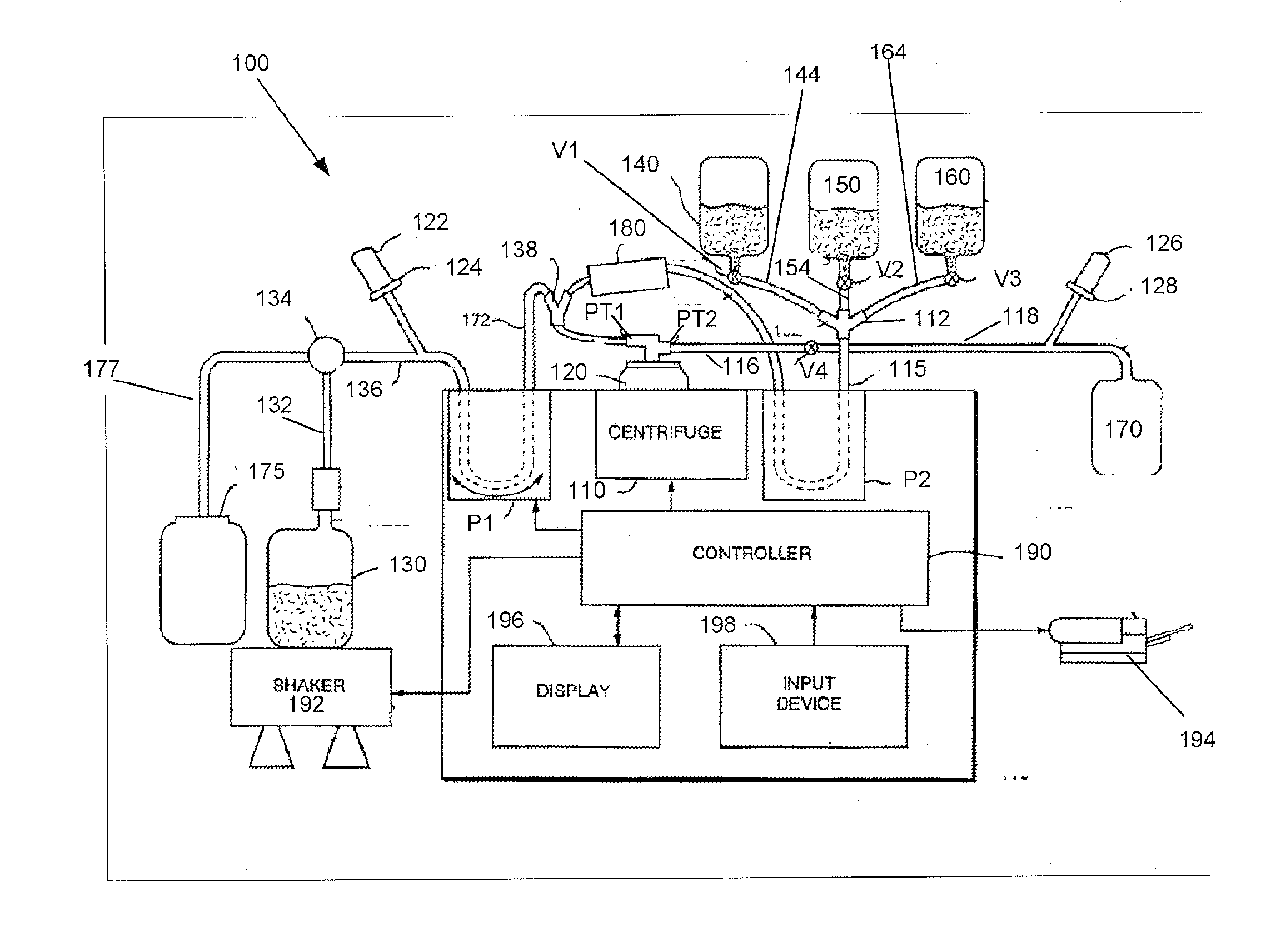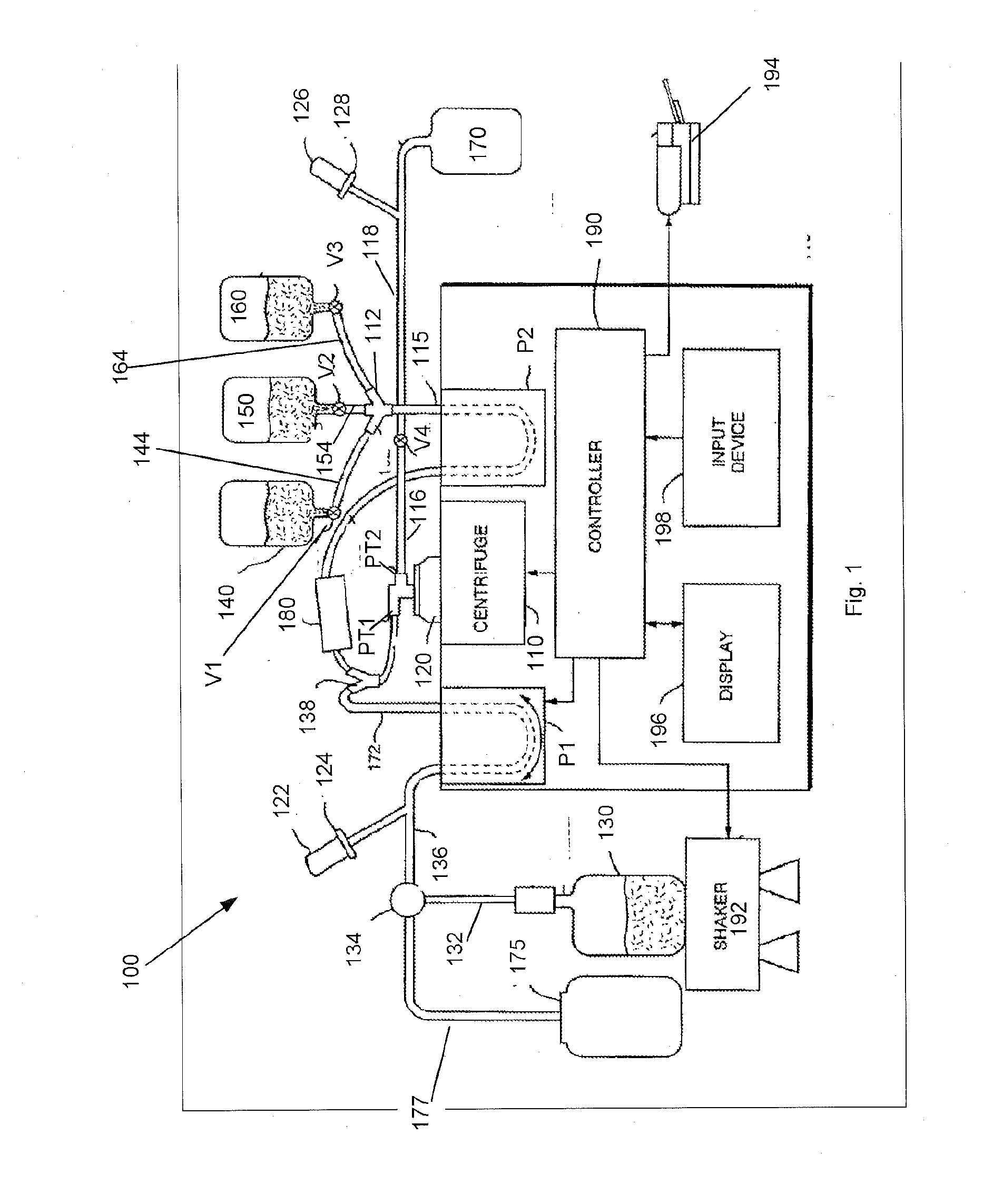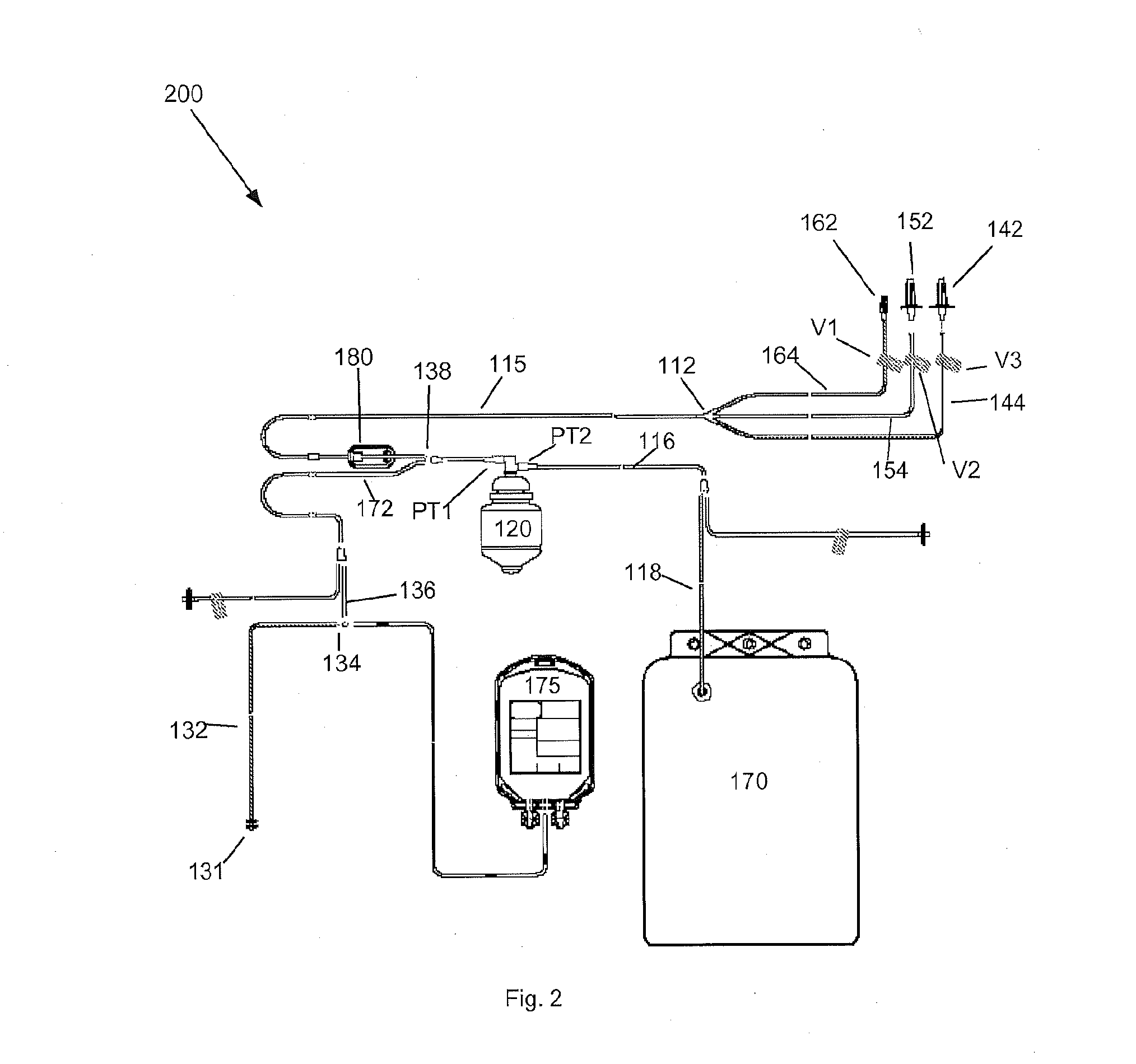System and Method For Automated Platelet Wash
a technology of platelet washing and system, applied in specific use bioreactors/fermenters, centrifuges, biomass after-treatment, etc., can solve the problems of increasing the severity of the reaction
- Summary
- Abstract
- Description
- Claims
- Application Information
AI Technical Summary
Benefits of technology
Problems solved by technology
Method used
Image
Examples
Embodiment Construction
[0008]In accordance with one embodiment of the present invention, a method for washing platelets includes introducing anticoagulant into a platelet product container, and drawing anticoagulated platelet product from the container. The platelet product (e.g., platelet rich plasma) within the container may contain platelets suspended within a supernatant (e.g., plasma). The method may then introduce the anticoagulated platelet product into a centrifuge bowl which, in turn, separates the platelets from the supernatant. Once the platelets are separated from the supernatant, the method may then introduce wash solution (e.g., anticoagulated saline glucose solution) into the centrifuge bowl to displace the supernatant from the bowl (e.g., into a waste container), and introduce platelet additive solution into the centrifuge bowl to displace the wash solution from the centrifuge bowl (e.g., into the waste container).
[0009]After introducing the platelet additive solution and displacing the wa...
PUM
| Property | Measurement | Unit |
|---|---|---|
| volumes | aaaaa | aaaaa |
| volume | aaaaa | aaaaa |
| time | aaaaa | aaaaa |
Abstract
Description
Claims
Application Information
 Login to View More
Login to View More - R&D
- Intellectual Property
- Life Sciences
- Materials
- Tech Scout
- Unparalleled Data Quality
- Higher Quality Content
- 60% Fewer Hallucinations
Browse by: Latest US Patents, China's latest patents, Technical Efficacy Thesaurus, Application Domain, Technology Topic, Popular Technical Reports.
© 2025 PatSnap. All rights reserved.Legal|Privacy policy|Modern Slavery Act Transparency Statement|Sitemap|About US| Contact US: help@patsnap.com



